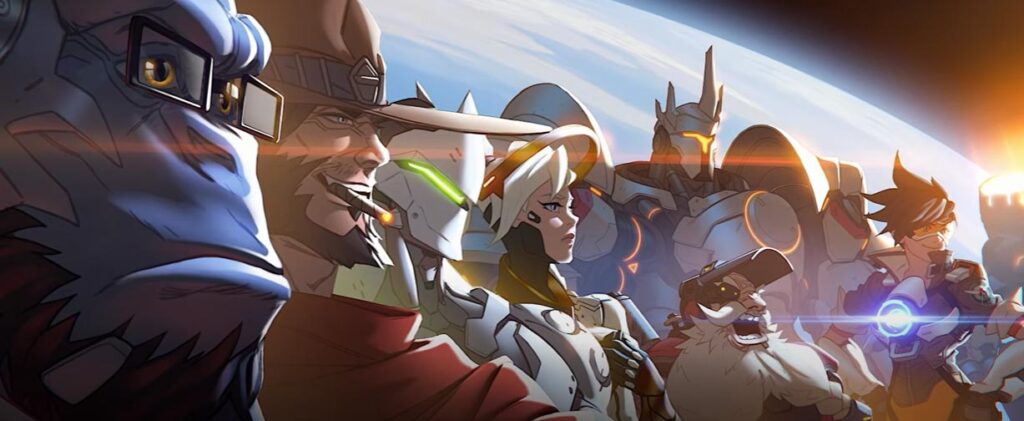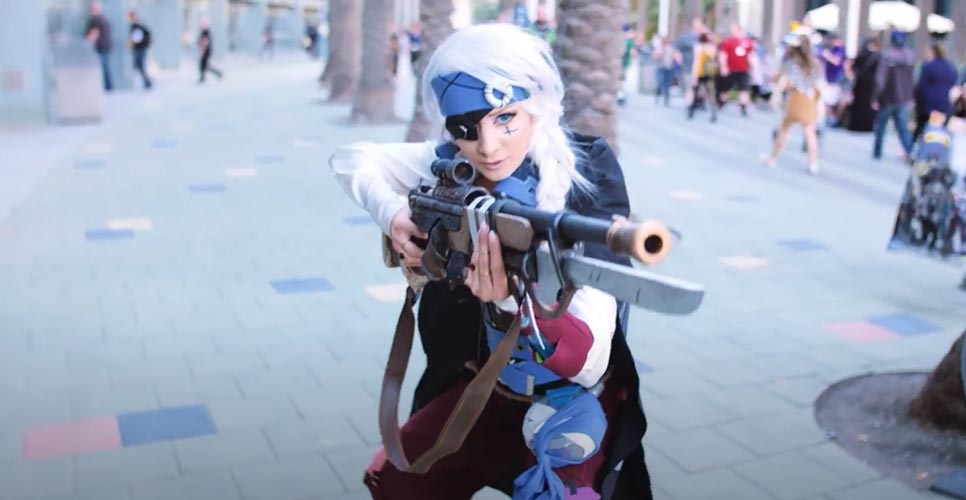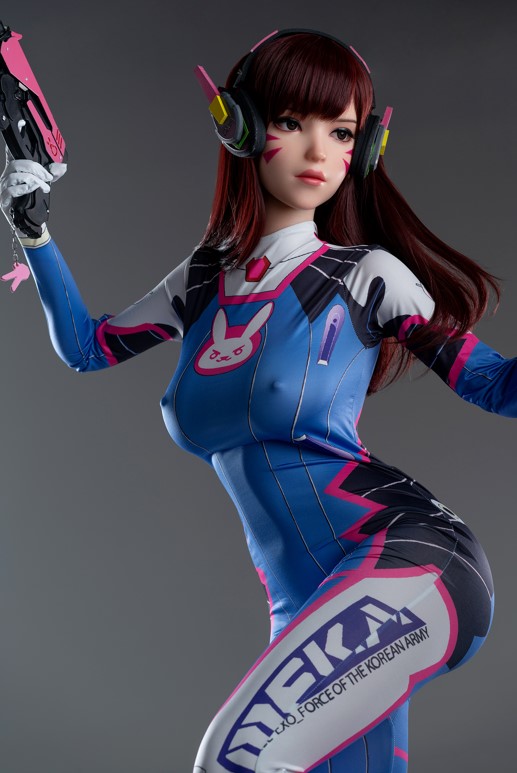Notice: Function WP_Interactivity_API::_process_directives was called incorrectly. Interactivity directives failed to process in "" due to a missing "P" end tag. Please see Debugging in WordPress for more information. (This message was added in version 6.6.0.) in /var/www/vhosts/otakudolls.com/httpdocs/wp-includes/functions.php on line 6121
Released by Blizzard Entertainment in 2016, Overwatch quickly became a global phenomenon, reshaping the landscape of team-based multiplayer shooters. Known for its vibrant art style, diverse cast of characters, and innovative gameplay, Overwatch has garnered millions of players worldwide and has become one of the most successful multiplayer games of the 21st century. The game’s unique combination of hero-based abilities, strategic team dynamics, and fast-paced combat has left a lasting mark on the gaming industry.

The Origins of Overwatch
Overwatch began development at Blizzard Entertainment as a project intended to bring a fresh take on the first-person shooter (FPS) genre. Blizzard had already established a strong reputation with hits like World of Warcraft, StarCraft, and Diablo. However, Overwatch was the company’s first foray into the FPS market, and it sought to innovate by blending the fast-paced shooting mechanics of traditional FPS games with the strategic, hero-based gameplay popularized by MOBA (multiplayer online battle arena) games.
Originally conceived as a spiritual successor to the canceled Titan project, Overwatch was officially revealed at BlizzCon 2014. Blizzard promised a unique, team-oriented shooter with diverse characters and abilities that would emphasize cooperation over traditional twitch reflexes. In May 2016, after months of beta testing, Overwatch was officially released to critical acclaim.
The Gameplay of Overwatch
Overwatch is a fast-paced, team-based first-person shooter that places emphasis on cooperation and strategy. The game features a wide variety of playable heroes, each with their own unique abilities and roles within a team. Matches are typically played in 6v6 format, with players selecting a hero that fits one of three primary roles: Damage, Tank, and Support.
1. Hero-Based Gameplay
Unlike traditional shooters, where players typically use similar weapons and abilities, Overwatch introduces a wide variety of playable heroes, each with unique abilities that influence gameplay. There are currently over 30 heroes, each with their own backstory and personality. Players choose from a range of characters, such as Reaper, the shadowy gunslinger, Mercy, the healing angel, and Winston, the genetically-engineered gorilla scientist.
2. Roles
- Damage heroes are focused on dealing damage to the enemy team and creating opportunities for their allies to secure kills. Examples include Tracer, Hanzo, and Junkrat.
- Tank heroes are designed to absorb damage and protect teammates, creating space for the rest of the team. Examples include Reinhardt, Winston, and D.Va.
- Support heroes heal, shield, and provide utility to the team. They are crucial for keeping teammates alive during fights. Examples include Zenyatta, Ana, and Lucio.
3. Objectives and Maps
Matches are played on a variety of maps, each featuring different objectives:
- Assault maps, where one team attacks and the other defends control points.
- Escort maps, where teams must either push or stop a payload from reaching a designated point.
- Hybrid maps, which combine both Assault and Escort objectives.
- Control maps, where teams fight to capture and hold a single point on the map.
Winning requires teamwork, strategy, and effective use of each hero’s abilities. The game’s emphasis on diverse playstyles and hero synergy sets it apart from traditional shooters.

Iconic Characters of Overwatch
One of Overwatch’s most defining features is its colorful and diverse cast of heroes. Each character brings something unique to the game in terms of both abilities and personality, which has made them iconic in gaming culture. Some of the most beloved heroes include:
1. Tracer (Lena Oxton)
The face of Overwatch, Tracer is a British pilot who can manipulate time with her “Blink” ability. Her speed and agility make her a highly mobile and hard-to-hit target. Her iconic catchphrase, “Cheers, love! The cavalry’s here!” has become synonymous with the game.
2. D.va (Hana song)
D.Va is a talented former professional gamer turned mech pilot in Overwatch. With her mech suit equipped with fusion cannons, a powerful booster, and the ability to self-destruct, D.Va is a fast and fearless fighter. Her confident attitude, competitive spirit, and iconic catchphrases, like “Nerf this!”, have made her one of the most beloved heroes in the game.
Silicon Doll Of D.Va
D.Va: the iconic gamer and mech pilot of Overwatch
![]()
With her fearless personality, powerful MEKA, and strong connection to the gaming world, D.Va has cemented herself as one of Overwatch’s greatest heroes. Her journey from esports champion to global defender proves that skill, strategy, and determination can make anyone a hero.
PURCHASE with full GUARANTEES
3. Mercy
A Swiss doctor who became a guardian angel on the battlefield, Mercy is a support hero known for her healing abilities and her ultimate ability, Resurrection, which can bring dead teammates back to life. She plays a critical role in maintaining her team’s sustainability.
4. Genji
A cyborg ninja, Genji is one of the most agile heroes in the game, able to deflect projectiles and dash through enemies. His story of redemption and brotherhood with Hanzo, his sibling, adds an emotional depth to the character.
5. Widowmaker
A French sniper with a tragic backstory, Widowmaker is one of the deadliest damage heroes in Overwatch. Her long-range attacks and ability to grapple to high places make her a threat from a distance.
6. Zenyatta
A robot monk with a philosophical outlook on life, Zenyatta is a support hero who can heal allies while damaging enemies with his orbs. His peaceful nature and wisdom have made him a fan-favorite for players who like to control the flow of the game.

The Impact of Overwatch on Gaming and Culture
Since its release, Overwatch has had a significant cultural impact, influencing not only the FPS genre but also broader gaming trends.
1. eSports and Overwatch League
Overwatch’s competitive scene exploded with the launch of the Overwatch League in 2018, a professional eSports league featuring teams from around the world. The Overwatch League has become a prominent fixture in the eSports world, attracting millions of viewers and giving the game an international platform.
2. Representation and Diversity
Overwatch was groundbreaking in its focus on diversity and inclusion. The game’s cast includes characters of various ethnicities, genders, and sexual orientations. Characters like Tracer, who was revealed as a lesbian, and Soldier: 76, who is portrayed as a gay character, have made waves in the gaming community for their representation.
3. Community and Fan Art
The Overwatch fanbase has exploded, creating a wide array of fan art, cosplay, and fan fiction. The game’s iconic characters have inspired an entire subculture of content creators, with fans participating in events like Overwatch fan conventions and cosplay competitions.
Overwatch has solidified itself as one of the most influential multiplayer games of all time. From its diverse cast of characters to its engaging team-based gameplay, it has redefined what a first-person shooter can be. With its emphasis on cooperation, strategy, and inclusivity, Overwatch has created a community of passionate fans and players.
As Overwatch 2 continues to expand the universe and evolve the gameplay, the saga remains one of Blizzard’s most successful and beloved franchises. Whether you’re a casual player, a competitive enthusiast, or a fan of the game’s incredible lore, Overwatch offers an experience that keeps evolving, pushing the boundaries of gaming and team-based shooters.
Life-sized figures of Overwatch characters are an incredible way for fans to bring the vibrant and action-packed world of the game into their own space. These meticulously crafted statues capture iconic heroes like Tracer, Reinhardt, Mercy, and Genji, showcasing their unique designs, powerful stances, and signature weapons. From Tracer’s energetic pose to Reinhardt’s massive hammer and imposing armor, each figure is designed with incredible attention to detail, bringing these beloved characters to life in stunning realism. These life-sized creations are not just collectibles but immersive works of art that honor the colorful, diverse, and dynamic universe of Overwatch, offering fans a tangible connection to the game they love.

